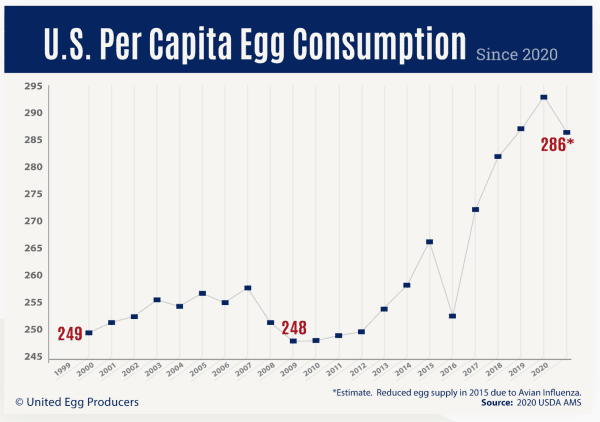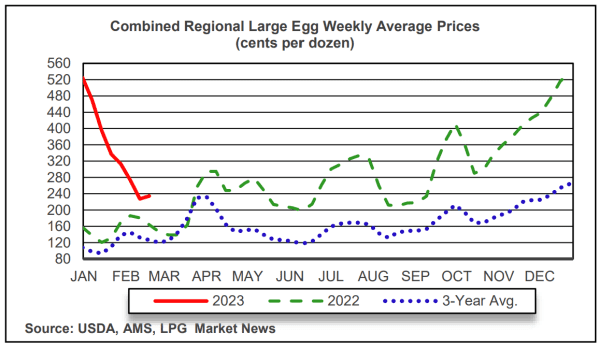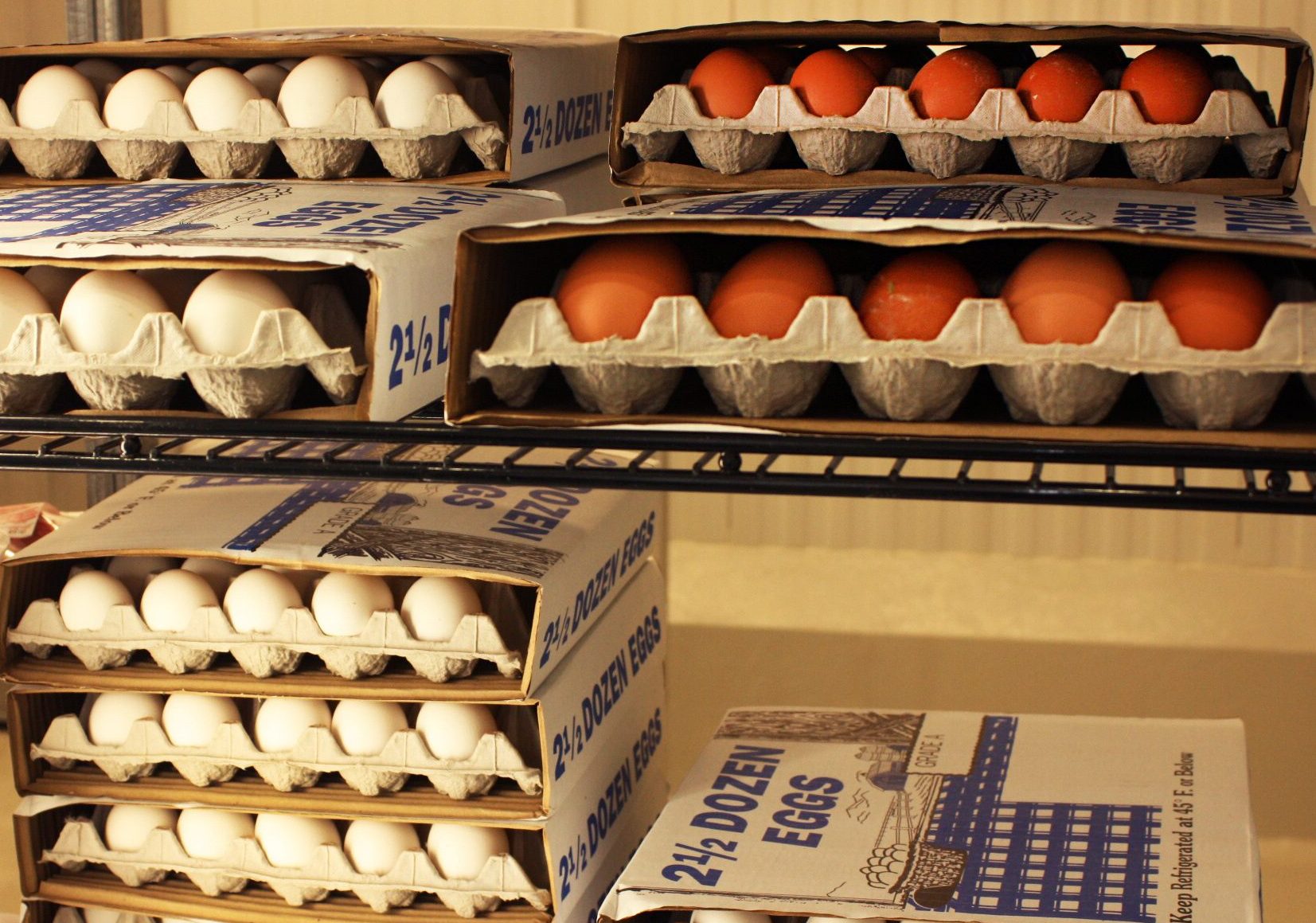Farm Management

We’ve probably all heard the children’s rhyme Humpty Dumpty–the story of a large egg character sitting on a wall. He fell off—because eggs don’t typically sit on walls very well. Then he cracked his shell in a “great fall.” If Humpty Dumpty were a real egg, that crack would be costly in today’s market. To crack an egg today costs 140% more on-average than one year ago ($1.80/doz. then versus $4.25/doz. today.) Both literally and figuratively—that’s not chicken feed.
Myth Busting
First, to dispel a myth that one may have heard going around. The low supply of eggs, combined with the higher prices is not the result of a feed company or egg company conspiracy. The steep increase in egg prices is simply economic supply and demand working as expected. The main culprit in this story is Highly Pathogenic Avian Influenza (HPAI).
HPAI is a wild fowl influenza virus that is easily spread to domestic fowl, with 100% mortality as the result. Even though HPAI has been a hot topic in the poultry industry for over a year now, it has been around prior to 2022. However, HPAI was typically a seasonal concern with a limited range and impact. In 2022, the virus seemed to overcome its seasonality and expanded its impact and range in the U.S. and North America. The USDA Animal and Plant Health Inspection Service estimates the loss of more than 58 million U.S. domestic fowl to the virus in 2022. Most of these losses are due to the mandated total depopulation of any infected flock as the only containment measure available to prevent the spread of the disease. Of those bird losses, it is estimated that 43 million were table egg laying hens. This brought about a 29% lower table egg inventory for 2022. Unfortunately, the losses will continue into 2023.
Many of the largest egg producers are now molting their hens in an effort to extend their productive life and keep egg supplies going. However, this process can only serve as a limited stopgap for lost production and cannot replace all the eggs losses. The bottom line for the egg industry is simply that dead hens lay no eggs. And since it takes a chicken approximately 22 weeks from hatch to laying the first egg, those hen losses won’t be quickly replenished in the field. It’s going to take some time before sufficient hens are back in full production.

Figure 1. Chart by the United Egg Producers.
Eggs in High Demand
On the demand side, the U.S. has been on an egg-consuming tear for several years. Demand for eggs has gone up since 2009 (figure 1). The industry had a slight downturn during and after the early
COVID-19 era, but as people started cooking more at home, they also needed more eggs. As people started eating out again, often at sit-down restaurants, more eggs were used. That high demand was then met by the sudden low supply in 2022. Low supply meeting high demand leads to higher prices as more buyers compete for a diminished resource.
On the production cost front, egg producers have had to contend with inflationary increases in all areas of production. Corn and other feed ingredients have been at sustained high price levels for a couple of years now. Labor has been short and the current increases in fuel and transportation prices have only compounded the problem of producing eggs at a profit for the farmer.
What will happen to egg prices going forward? While the future is hard to predict exactly, a few things could reasonably be expected. In the short term, egg prices are starting to decline and may reach a reasonable level soon (figure 2). As egg producers aggressively molt and repopulate their birds as fast as possible to both try to capture profit as well as maintain business operations, the lower post-holiday demand period may help keep prices down. However, we are quickly approaching the Easter season with historically the highest demand for eggs all year. That increase in demand on the not-so-fully replenished hen numbers may push prices back up. Long-term, many of the farms producing table eggs and suffering HPAI losses are family operations with aging owners. Some of these farms may not be repopulated. Others may change ownership and/or shrink in size. For some farms, expansion is the goal. However, increasing interest rates and increasing calls for “cage-free” egg production – which cost more to build and yield fewer eggs – may be barriers to further expansion regardless of egg prices. Throw into the mix the now ever-present threat of a HPAI outbreak causing a complete depopulation of a farm’s birds, and it all equals an uncertain future for egg supplies and egg prices.

Figure 2. Graph created by the United States Department of Agriculture.
Looking Forward
On the sunny side, even at today’s higher prices, eggs are still a mostly affordable, excellent source of protein and nutrients in stable, storable, natural packaging. So go get a few eggs for breakfast, just don’t leave them on top of a wall.
The Easter rush for eggs may push prices back up in the short-term. Egg prices had come down considerably since the end of 2022, however they are still above pre-2022 three-year average prices.

